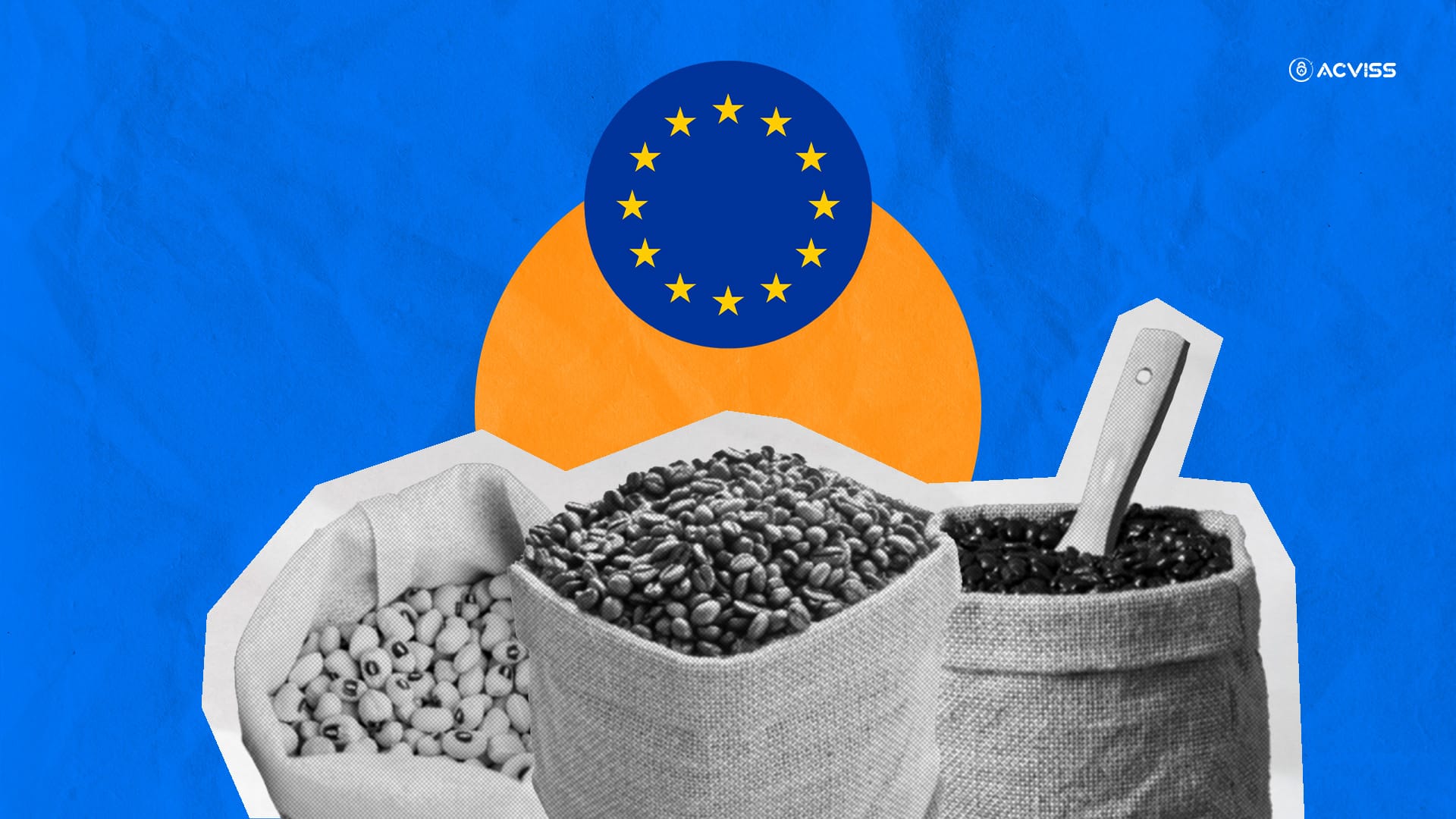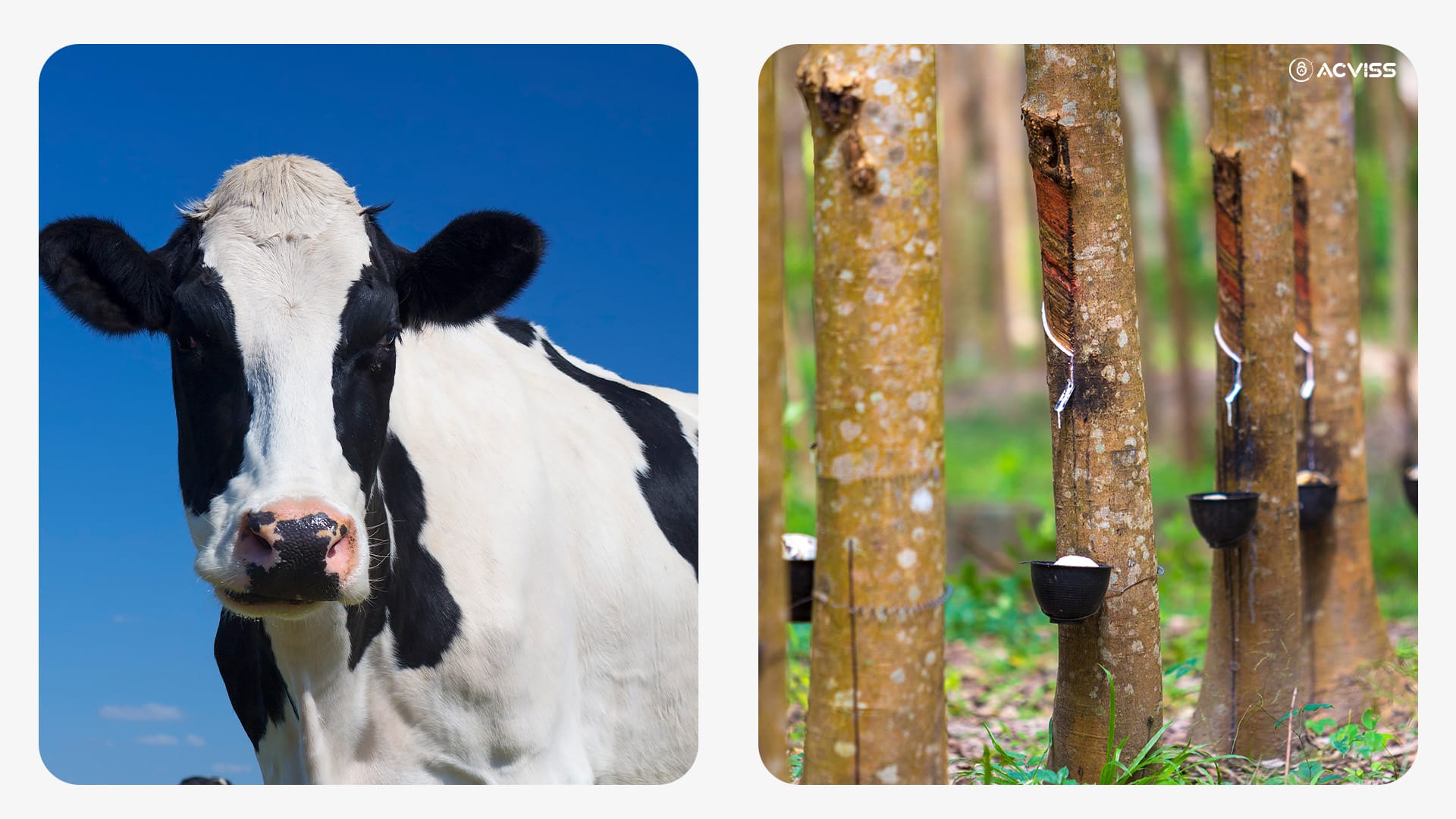Checklist for Ensuring EUDR Implementation for all Commodities

The impact of deforestation on our planet is rising. Thus, Europe has come up with the European Union Deforestation Regulation (EUDR) to contribute to the moment against deforestation, thereby helping to reduce its impact on our planet. With rising concerns over deforestation and its impact on our planet, the European Union Deforestation Regulation (EUDR) plays a critical role in mandating compliance across multiple industries. Whether it’s the coffee we drink, the rubber in our tyres, or the timber in our furniture, each of these commodities has a distinct checklist to ensure sustainable sourcing that meets EUDR standards.
The EUDR targets seven key commodity groups and each of these requires unique compliance measures to mitigate deforestation risks. But what does this mean for businesses, particularly in commodity-heavy sectors like coffee, rubber, and cocoa? Compliance isn’t just about regulations; it’s a step towards global sustainability. This blog breaks down the essential checklists for EUDR compliance, focusing on specific commodity categories and offering a common compliance framework to help businesses stay ahead.
List of Categories Under EUDR Compliance
Here are the seven product categories that fall under EUDR compliance:
- Coffee: Widely consumed worldwide, but its cultivation is a significant contributor to deforestation.
- Cocoa: Critical to the chocolate industry, but heavily linked to illegal deforestation.
- Palm Oil: A common ingredient in many products, palm oil cultivation is notorious for deforestation impacts.
- Cattle and Beef: Deforestation for grazing land is a major issue, with EUDR targeting traceability in these industries.
- Soy: Used as animal feed and in various foods, soy farming often results in forest clearance.
- Wood and Timber: The illegal logging associated with timber production impacts forests globally.
- Rubber: Essential for various industries, rubber plantations contribute to land-use changes and deforestation.
Along with these, any products derived from these commodities also come under the EUDR regulation. For example, furniture, chocolate cookies, etc.
Each of these categories poses unique challenges, but EUDR ensures that businesses sourcing these commodities meet sustainable standards.
Compliance Checklist for Ensuring EUDR Implementation
Each commodity and categories have different challenges in the supply chain and thus has slightly different ways to ensure EUDR compliance. We have compiled these commodities in separate groups and given a proper checklist to ensure compliance with EUDR regulations.
Group 1: Coffee, Cocoa, and Soy

These commodities often originate from regions where deforestation is a critical concern. The EUDR compliance for these categories includes robust documentation and monitoring to ensure traceability and sustainability:
- Traceability Documentation: Maintain thorough records from farm to export, ensuring full supply chain visibility.
- Deforestation-Free Certification: Obtain certifications that verify the absence of deforestation in sourcing.
- Supplier Due Diligence: Conduct background checks on suppliers to verify sustainable practices and compliance with local and international laws.
- Land Use Records: Document historical and current land use for cultivation to verify no recent deforestation.
- Monitoring and Reporting: Utilise technologies such as blockchain for real-time data to monitor the supply chain.
- Sustainable Farming Verification: Regular third-party audits ensure sustainable farming methods are practised, maintaining EUDR compliance.
Group 2: Palm Oil and Timber

Due to their significant deforestation impact, these commodities are under tight scrutiny. The EUDR compliance involves strict adherence to traceability and thorough environmental impact assessments:
- Supply Chain Transparency: Implement blockchain or similar technologies to maintain an unbroken, transparent chain from source to market.
- Environmental Impact Assessments: Ensure assessments verify that operations do not harm surrounding ecosystems and comply with EUDR standards.
- Legal Harvest Verification: Secure permits and check for legal compliance regarding land and forest use, especially in high-risk areas.
- Certification Programs: Engage with recognized certification programs like the FSC for timber and RSPO for palm oil, validating sustainable sourcing.
- Satellite Monitoring: Leverage satellite imagery and remote sensing tools to regularly monitor land use, preventing illegal deforestation.
- Third-Party Audits: Conduct regular, unbiased audits by accredited organisations to validate compliance across the supply chain.
Group 3: Cattle and Rubber

Cattle and rubber industries pose environmental challenges like land degradation and habitat loss. Ensuring EUDR compliance in these sectors involves stringent documentation and proactive measures to maintain ecosystem integrity.
- Animal Welfare and Land Use Tracking: Implement monitoring systems that document grazing practices, ensuring they don't lead to deforestation.
- Traceability Systems for Raw Material: Maintain thorough records of the cattle or rubber's origin, detailing all stages from source to processing.
- Land Conversion Records: Verify that no recent forested land has been cleared for cattle grazing or rubber plantations by documenting land-use changes.
- Deforestation Monitoring: Use geospatial technology to track land-use patterns, preventing unauthorised deforestation.
- Supplier Compliance Checks: Carry out extensive due diligence on suppliers to confirm that they meet deforestation-free requirements.
- Sustainable Sourcing Policies: Establish and enforce internal policies for sustainable cattle ranching and rubber tapping, backed by third-party audits where necessary.
Common Compliance Steps for EUDR for All Categories
While specific requirements vary by commodity, certain steps are essential across the board to meet EUDR compliance:
- Risk Assessment: Conduct initial assessments to identify high-risk suppliers or regions, tailoring strategies accordingly.
- Technology Integration: Use advanced tools like Acviss for real-time supply chain verification, ensuring traceability and transparency at every stage.
- Data Collection and Reporting: Maintain accurate records of sourcing practices, enabling easy access to mandatory reporting data.
- Consumer Transparency: Share data with consumers to promote transparency, enhancing brand reputation and trust.
- Continuous Monitoring and Improvement: Regularly review and update compliance practices based on new regulations, supplier changes, or technological advancements.
A Secure Supply Chain
As the world is getting affected by the impact of deforestation on the environment, EUDR compliance becomes crucial for businesses. Although EUDR is limited to trading in European countries, maintaining EUDR compliance would definitely amp up the brand value amongst consumers. To keep up with EUDR and stay ahead of your competition, the most important thing is to take care of your supply chain.
Origin by Acviss, with its capabilities of traceability to maintain and track data, incorporating blockchain technology for transparency and real-time tracking, empowers brands to seamlessly navigate all the EUDR compliance requirements. With collective action from businesses, regulators, and consumers alike, a deforestation-free future becomes a tangible goal—one step closer with every compliant commodity.
Interested in learning more about EUDR and how to get compliant? Get in touch with our experts today and take a walkthrough on the regulation requirements and how to equip yourselves before the deadline.
